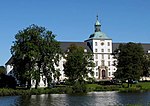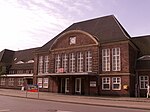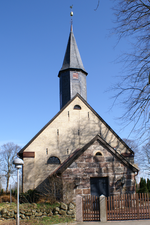Globe of Gottorf

The Globe of Gottorf is a 17th-century, large, walk-in globe of the Earth and the celestial sphere. It measures 3.1 meters in diameter. Conceived and constructed at Gottorf Castle near Schleswig, it was later transferred to the Kunstkamera museum in Saint Petersburg in Russia. Following a fire in 1747 most of the globe had to be reconstructed. A modern replica was constructed in 2005 at the original location near Schleswig. The globe features a map of the Earth's surface on the outside and a map of star constellations with astronomical and mythological symbols on the inside. Turned manually or by water power, it demonstrates the movement of the heavens to those seated inside. It was a predecessor of the modern planetarium. The globe was built between 1650 and 1664 on the request of Frederick III, Duke of Holstein-Gottorp. The construction was supervised by Frederick's court scholar and librarian Adam Olearius and carried out by the gunsmith Andreas Bösch from Limburg an der Lahn.
Excerpt from the Wikipedia article Globe of Gottorf (License: CC BY-SA 3.0, Authors, Images).Globe of Gottorf
Stampfmühle,
Geographical coordinates (GPS) Address Nearby Places Show on map
Geographical coordinates (GPS)
| Latitude | Longitude |
|---|---|
| N 54.517 ° | E 9.54 ° |
Address
Herkulesgruppe
Stampfmühle
24837 , Lollfuß
Schleswig-Holstein, Germany
Open on Google Maps









